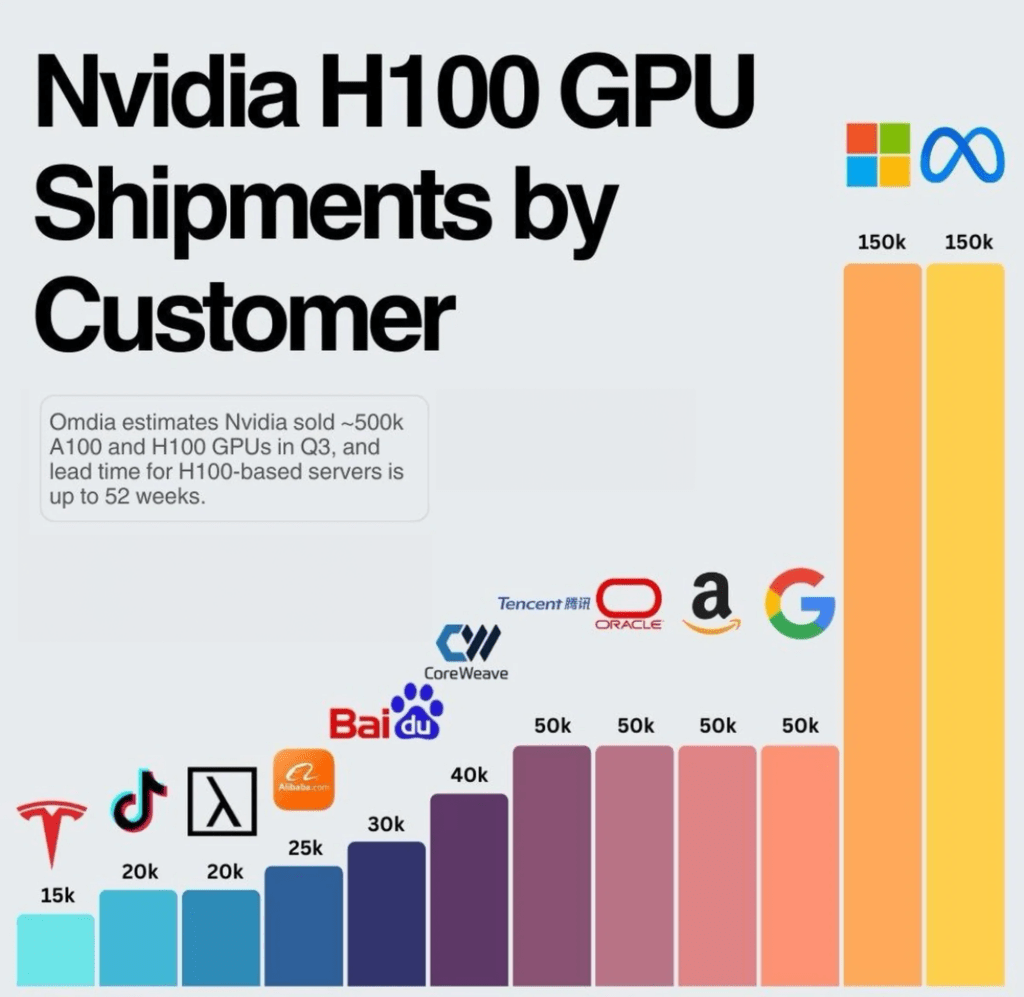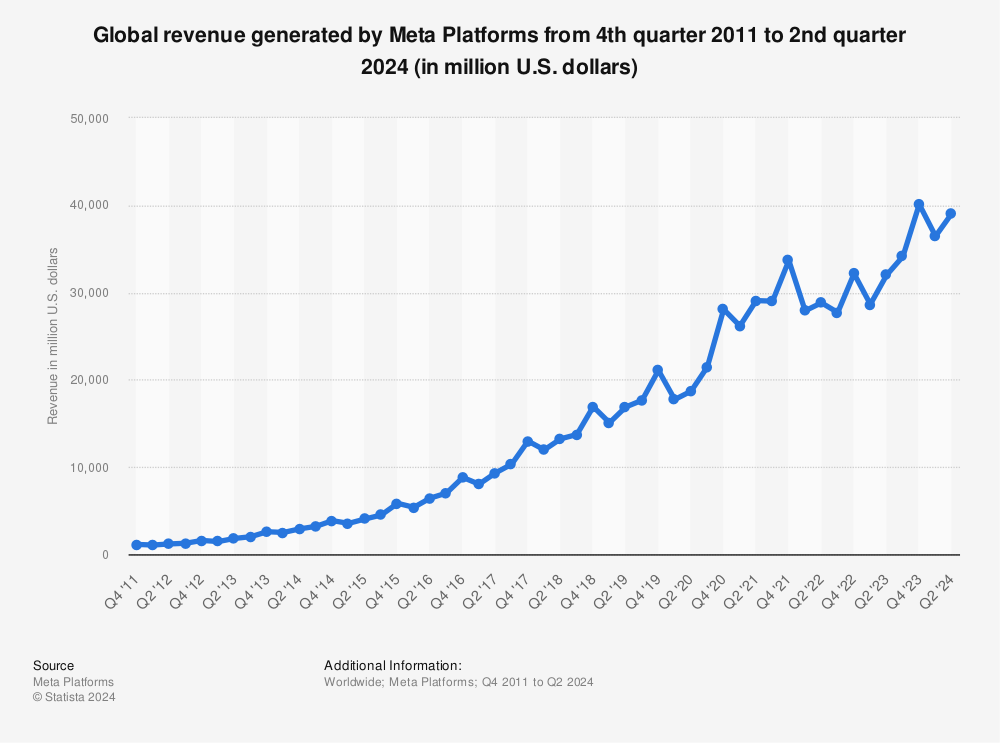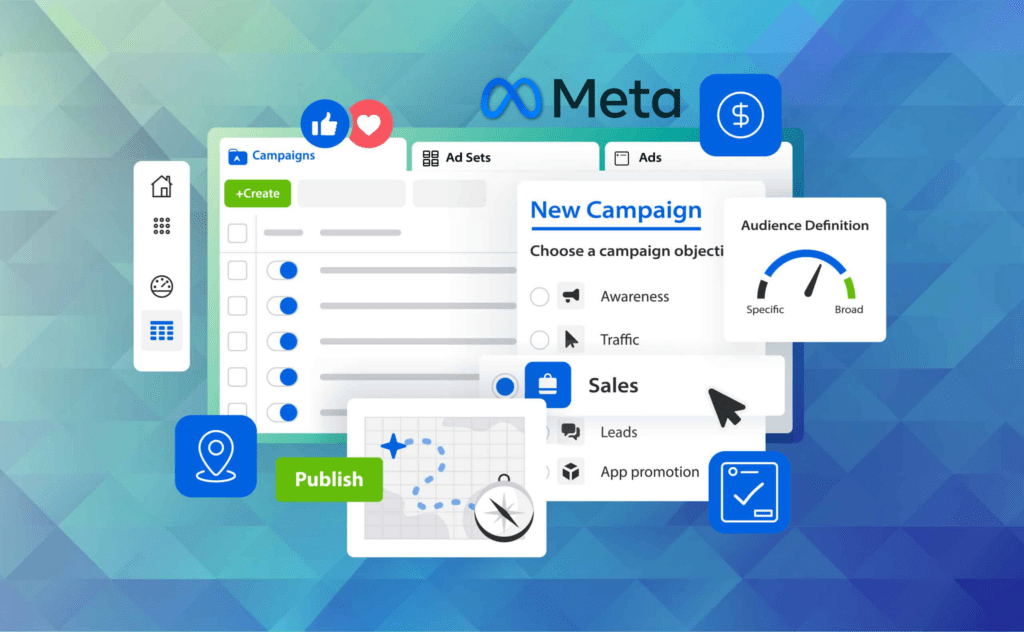We’ve all seen the new MetaAI search bar and content overview features making waves across its apps. These changes have been quietly reshaping the user experience, but is there a deeper strategy behind Meta’s moves?
Its recent Q2 earnings call highlighted an astonishing $40 billion investment in Nvidia Graphic Processing Units (GPUs), resulting in a 22% revenue growth of $39.1 billion and 73% profit increase of $13.5 billion since last year. These are some insane numbers, even for such a large mega-cap tech company. And, although Meta made its money back, there’s a future-state reason it made the investment.

Caption: Meta and Microsoft lead the AI race with massive investments in Nvidia H100 GPUs, far outpacing other tech giants in their commitment to advanced computing power.
Think about one of the core uses for these GPUs: accelerated computing and machine learning (ML) tasks. In Meta’s world, they are the hardware that drive AI ad targeting.
Why would Meta make a wager like this? Consider this: Almost 4 billion people — essentially half of the world’s population — actively use one of Meta’s platforms monthly, as do 77% of all internet users. If that doesn’t define “captive audience,” I don’t know what does.
It’s safe to say that Meta’s influence and implications have the potential to dramatically impact marketing strategies on a global scale. This substantial investment highlights Meta’s ambition to advance AI capabilities for more personalized ad targeting, helping to reshape the landscape of digital advertising.
The Power of AI-Driven Ads
The industry shift toward AI might be controversial, but it’s also inevitable. With 98% of Meta’s sales generated from ads, these profit margins prove that AI-targeted advertisements have quickly revolutionized digital marketing by providing precision targeting, real-time optimization, and cost efficiency.
By analyzing intricate datasets from users, Meta has built elaborate AI models that can, for example, analyze and adjust thousands of A/B tests in real-time, showing consumers the personalized ads that are most likely to engage them. The results? Minimal wasted ad spend and significantly higher ROI.
But what does that mean for creators that are now forced to prioritize this platform in order maximize profitability and reach new audiences?

Caption: Meta Platforms’ revenue skyrockets: A decade-long journey from Q4 2011 to Q2 2024 shows exponential growth, highlighting the company’s dominance in digital marketing.
The Benefits are Far from Universal
Essentially, AI will now determine whether your ads succeed or fail. As the digital marketing landscape evolves, businesses must adapt their strategies to remain competitive. Changing social content strategies to remain relevant by utilizing AI may seem like a big headache, but its potential makes it something we must start thinking about now.
That said, not everyone will have the wherewithal to implement those models just yet. .
Big brands with larger customer bases, datasets, and wallets have the resources to allow AI models to learn more effectively and make more accurate predictions. However, for many smaller businesses looking to grow, it may present a challenge for segmentation and more precise personalization, ultimately limiting the capabilities of Meta’s Advantage+ Ad Campaigns and various AI models like SAM, Llama, and MetaAI.
In addition, adapting to these changes not only involves updating strategies but requires thinking about how we measure success in this new paradigm. The integration of AI demands a shift toward more agile and data-driven decision-making processes to stay ahead.

Caption: Meta’s Advantage+ Ad Campaigns are revolutionizing AI-targeted advertising, enhancing precision and effectiveness with advanced AI models to drive more sales and maximize ROI.
Quality Content Still Levels the Playing Field
So, how do we create content that best leverages these new AI capabilities? Perhaps it all comes back to the same principle that we’ve known this whole time: create better ads. In a new age of TikTok consumerism, where the sheer quantity of content typically results in saturation and decreased retention rates, maybe it’s time to focus on quality again. Good, impactful content can only enhance AI’s ability to help, right?
If we look at how AI influences algorithms and pushes certain content forward to the right people, it comes down to engagement. It’s essentially a positive loop cycle that rewards valuable content with higher visibility. Consumers get to see what they want to see — when and where they want to see it — and Meta gets more people to continue spending time on their apps. It’s a win-win for the customer, seller, and platform.
Content that invokes conversation and discussion inside and outside the platforms performs better as people react with their own opinions and share with others. Maybe it pays to be controversial. Maybe it pays to be different. Maybe it pays to be kinda crazy.
Crazy is What We Do
At Rebellion Group, our identity has always been rooted in challenging conventions, standing out, and being rebellious. We embrace emerging obstacles and welcome the changing future to push past our creative limits. The advent of AI-driven ad targeting is not just an industry shift but, for us, an opportunity to rethink our approach to digital marketing. The future of advertising is here, and it demands that we evolve.
The goal is not just to keep up with the changes but to lead the way, fostering innovation within our strategies.
In this era of AI-driven marketing, we are excited to embrace the challenges, using them as a catalyst to push our creative boundaries and redefine what is possible. It’s the commitment to being unique and the willingness to adapt that has always set us apart — and will continue to.
– Wei Guo, Creative Content Specialist